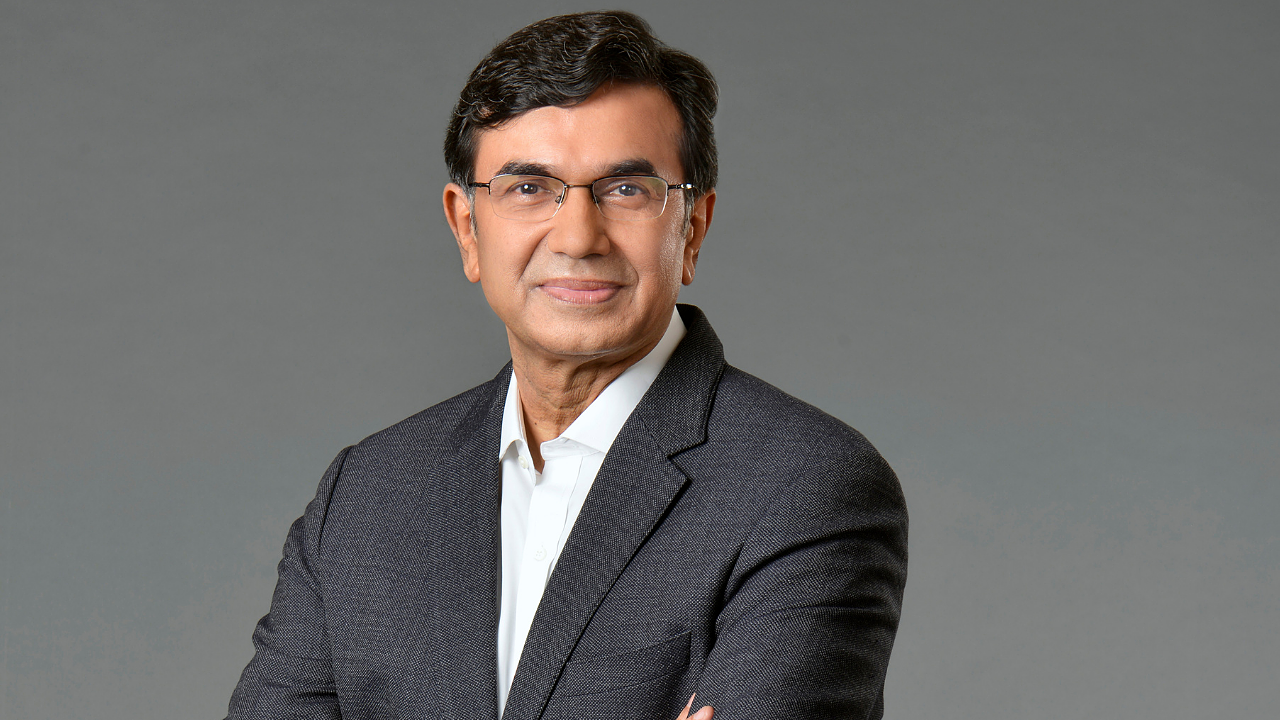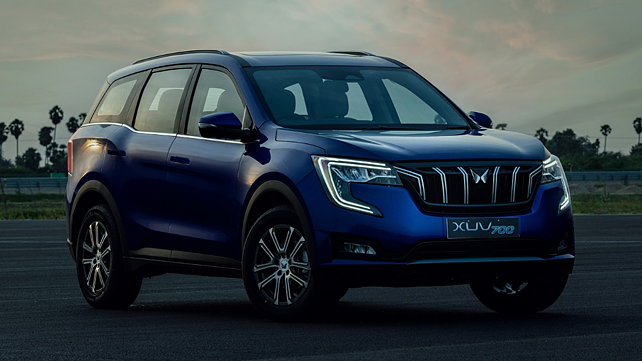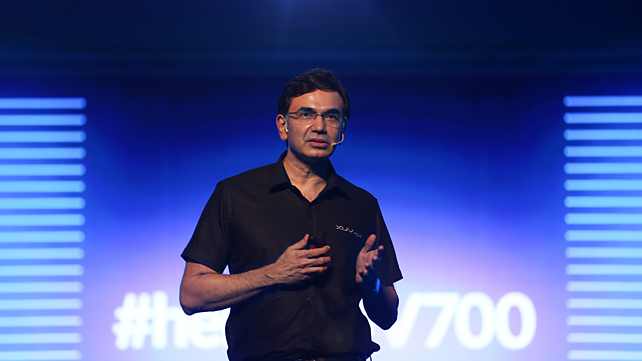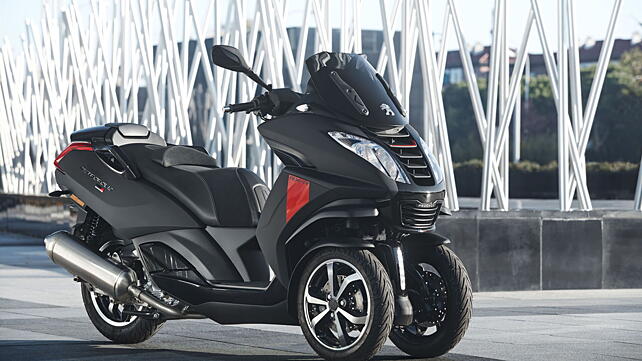
Rajesh Jejurikar is Executive Director (Auto & Farm Sectors) of Mahindra & Mahindra and is member of the Group Executive Board at M&M. An MBA from SP Jain Institute of Management, Rajesh attended the Advanced Management Program at The Wharton School, University of Pennsylvania and was awarded the British Chevening Scholarship to study at the Manchester Business School, UK. He also serves on the Governing Council of SP Jain Institute of Management.
Considering the current market situation and Mahindra’s position in the UV market, how important is the XUV700?
Clearly the XUV700 is a very important product for us. It is important because it comes in a very crucial segment, which is core to us. We really needed a new momentum with a strong product in a segment, where we already always had a significant presence. We have set this up in a way that it allows us to address a very large section of the market.
We have done that by breaking the product offering into two series – the M series, which is still very competitive and gives feature offerings better than its equivalent price point players, and then we have the AdrenoX series – the AX series – that takes technology to a completely different level.
We think it's a crucial part of our getting back to the number one SUV position in the market.
You’ve talked about the XUV700 being your most ambitious product. Does this now become a benchmark of sorts for all your future product introductions?
The answer is of course yes, and we are hence setting this up with a complete brand transformation agenda, including our new logo. This new logo is significant in many ways, because the way we've set this up, including the visual identity at the dealerships, is to very strongly call-out SUVs. It is no longer ambiguous about what we're going to do. We're very clearly and strongly calling out that we are here to play in this space, and we will create authentic, strong SUVs with adventure capability.
Adventure capability does not mean we will only do chassis-based products. That's why we've consciously used the word adventure capability and not said off-roading, because it does not mean that everything that we offer will have a four wheel drive. But when you get out there, you should feel you're on an adventure, wherever you are going. And that's what we will create the future around.
Our new logo, new identity, and “explore the impossible” as the overall brand idea, will be the guiding force behind the rest of the products that will come.
Beyond products, what are some of the other factors that would drive your ambition to reclaim the number 1 position in the UV market?
The crucial part of success is going to be around the brand interface and brand experience. And that is in-vehicle and outside vehicle. In the vehicle, we are creating interfaces, as you have seen in the XUV700, which allows a high level of interaction between the product and the person. We've actually personalised that by calling it ‘fun in and fun with’. We have segmented the AdrenoX screen into things which are fun in, like the entertainment and fun with, which is fun with the car. So, that's customer experience in a way, not technology.
We're trying to humanise things. When we came up with this idea – Rajeev Mehta, our Head of Product Planning first suggested this – we were looking for something for the consumer, not technical. Then we came up with the zip, zip zoom modes. Now, what does this whole thing mean? I mean, there's no logic to it.
The reason we liked it, as we said, is because the kids are going to enjoy this in the car. How often are we as drivers going to be playing in zip, zap, and zoom modes? But we think the young crowd, the children in the car, would like to play around with these modes, asking their parents to switch between the different modes.
I think this is customer experience. This is what customers want today with their cars. It's how you're feeling in that journey. And that's really what this is about.

Translating this customer experience to the dealership experience is a very important part of the transformation journey; building and bringing back more strongly the whole Mahindra adventure equity, the experiences, which people just love about us. That's all a part of building authentic SUVs. Again, that doesn't mean the drive has to be only 4X4. We have to get people with 4X2 to experience adventure.
That's what we're going to try and build the whole brand proposition around – adventure, capability, exploring the impossible, newer experiences and product is just one part of that.
Specific to the retail segment, how are you looking at amplifying the opportunities with digital in the coming days?
Right now, we are actually working on a whole customer experience journey mapping – right from when the customer will connect with us digitally or call centre, to the buying experience. And we think that is the future. We really need to prepare ourselves for that future, which is very, very digitally enabled. As a part of the group office, we've set up a large capability now of talent, which is working with the business units to focus on and drive customer experience journeys.
Customers will go and touch & feel the car, and there's no running away from it. I don't think anyone who is passionate about a car – and at least people who buy our cars are passionate – are not going to enjoy booking online if they haven't driven the car before. There is going to be a touch & feel, and there is going to be a digital interface. The digital interface would be at the search and at the ordering level, and in-between, you will have the touch & feel.
So, we really have to blend a combination of digital experiences and touch & feel, and both have to be very enriching.
There are of course multiple challenges in the market – the semiconductor shortage in particular. How is Mahindra dealing with it?
I don't think we can use the word ‘dealing’ with it. The right word, maybe would be ‘coping’ with it or ‘adapting’ to it or ‘learning to live’ with it. It's like how we are adapting to COVID. You take each day as it comes and we'll need to adapt with it. That's the reality of the world. To pretend that we are not in that world, I think is fooling ourselves. We're not going to pretend we are not in that world.
Does that mean that we don't go out and launch XUV700? Of course, we go ahead and launch it, but we have to be adaptive. We are living in a world where there is uncertainty and times that we've never seen before. I mean, we never start a month with no idea what's happening, but that is what it is today. We have to learn to live with it for the next few months, and I think that itself is a huge organisational learning. For all of us, we have to be adaptive, knowing that the word ‘plan’ has a very limited relevance – it may be hours, days, sometimes weeks, rarely more.

How are you really looking at the opportunity with electric vehicles in the country?
I'm just going to focus in this discussion on the SUV space, because we have a whole last-mile mobility business. We think that's ready for inflection point. We've structured that to drive inflection. We made that an end-to-end business entity with sales, marketing, product planning, exports – everything becomes one compact unit. It doesn’t have to work across multiple organisation interfaces – it’s compact, agile and being set-up for growth because there we see the growth is around the corner.
In the personal SUV space, our sense is it's going to take two to three years in India, before you really see any momentum. And there are very clear reasons why it will take that long. The cost of EVs, the charging infrastructure, the ability to connect with ‘love for planet’ – all of these things are evolving, and there will come a point when you will see an inflection point. Our sense is that it is going to take two to three years.
So, we are building our whole EV-SUV strategy on the assumption that we need to be ready two to three years later. We are not doing anything knee-jerk and saying we need to get something out in six months or one year. We think that is going to be a compromise. When we come out, we'll come out with technologies that are absolutely futuristic and ready for the market, when it’s ready to explore.
I think in this market, there's going to be nothing like a first mover advantage. You could be there before, but you won't be there if you don't have the right technology tomorrow. It doesn't matter who came in first. The technology curve is moving at a very rapid pace – being there yesterday has no relevance to being there tomorrow. So, we'd rather be there tomorrow than worry about who is there today.
Considering the global and domestic trends, what are some of the other opportunities that you see in the market for Mahindra?
As far as consumers are concerned, the critical success factor is going to be human machine interface. That is what will drive differentiation in electric space, and that is what will drive differentiation in the SUV space. Even when you have a very zippy car or a car that you really enjoy driving, like an SUV, things like drive modes will create that interface, which allows you to enjoy that experience much more.
The ability to see the curve when you are accelerating – you just don't feel it, you see it. That's human machine interface and we’re trying to bring some of that. But as we prepare ourselves for a new future, the critical thing is going to be preparing for that digitally savvy consumer, who will come to expect these things from our vehicles.
What about two-wheelers, Rajesh? How are you looking at the opportunity in this area?
As you know, we're not playing in the mass market. That's clear. We have two legs on which we have our two-wheeler strategy at the moment. One is the Peugeot Scooters, and the second is Classic Legends. Both are niche and strong brands in their right.
Peugeot Scooters is a very strong two-wheeler brand in Europe. The Peugeot Kisbee is number one in its segment in many countries across Europe. The Peugeot brand is strong in Southeast Asia as well and we are now taking that into Vietnam and the whole region, where there is a very high level of French affinity. It’s doing very well in China. The new Peugeot Metropolis is also doing well. So, that's one key part of our two-wheeler strategy.

Then there is an electric two-wheeler play that we'll do around the Peugeot brand. Then there is what we do with the Jawa and BSA brands as we go forward. So, it's a very niche, focused brand strategy at this point of time and we think we have a reasonable chance of success because then you’re using brand strengths, which are relevant in that space.
So, how far are we from seeing two-wheeler EVs from Mahindra hitting the market?
We haven't yet focused on the India strategy for two-wheelers and this is something we got to think through carefully. We don't want to do something unless we have a very clear right to it. And we have to be clear that we have a right to win compared to all the players who are going to play a very strong EV game in India in two-wheelers.
We have gone through this curve before, and we know we would need a strong, competitive advantage. We are rather focusing on areas, which are strong and building up there and then we'll see what an appropriate time is, and whether we should or not bring these things to India.
In terms of strategy, would you look at buying a brand or building a brand from scratch?
I wouldn't use the word acquisition, but certainly say that partnerships and alliances are a very critical part of how we want to build a portfolio of Peugeot scooters. You don't have to do an acquisition for that. I think there's enough product capability and manufacturing capability available, and we are looking at leveraging that.